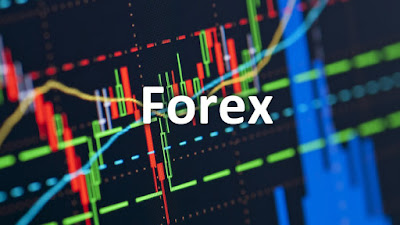Traders need to understand volatility in order to get an advantage when trading options on the stock market. Misunderstanding of this topic by the trader can lead to frustration, confusion and ultimately lost investment. As a trader or investor it is vital to have a clear understanding of the two primary types of volatility in order to be successful at options trading. They include implied volatility and statistical volatility.
Implied volatility is tied to the options price or options pricing model. If traders or investors who are involved in option trading are expecting a future event to drastically change options prices of the underlying security, then they may want the buyer to pay more for the option that they are selling. If this takes place the implied volatility increases. The volatility that is implied in the price of the option changes. However if the option seller is not excited about the future prospects of the option then the option trading prices could reflect very little implied volatility.
Statistical volatility, or historical volatility, relates to option trading in terms of historical performance. It is tied closely to the price of the underlying security. The way traders and investors measure this is to determine how volatile the market reflects its daily pricing fluctuations. The higher the statistics and the more the prices fluctuate, the more volatile the market. Of course the reverse is true if the statistics are lower and the prices are not fluid, then the market is somewhat more predictable with less volatility associated with trading options on the market.
Understanding these scenarios is useful when option trading. Traders and investors compare the statistical and implied volatility in order to determine whether or not the option pricing is overvalued or undervalued. The way to determine whether they are over or under valued is to determine the differences between these two prices. If the implied volatility is higher than the statistical volatility, then the option pricing would be more expensive than if the option pricing model reflected the implied volatility closer to the statistical. It could be as simple as understanding the options pricing and analyzing the daily fluctuations or trends associated with the market and various options.
When a trader or investor begins option trading on the market they need to understand whether they are trading with statistical or implied volatility. If the statistical volatility value is higher than the implied value, it would mean that the option prices are less expensive. This is primarily due to the daily fluctuations of the market, options or underlying securities. If the daily fluctuations are greater than the anticipated future pricing then the options and pricing movements are tied to the underlying security.
Many traders and investors discovery option trading can be rewarding and profitable. Further understanding market volatility and the ramifications of them as applied to trading options on the market can provide greater insight into how and when to invest in various options or option spreads. - 31876
Implied volatility is tied to the options price or options pricing model. If traders or investors who are involved in option trading are expecting a future event to drastically change options prices of the underlying security, then they may want the buyer to pay more for the option that they are selling. If this takes place the implied volatility increases. The volatility that is implied in the price of the option changes. However if the option seller is not excited about the future prospects of the option then the option trading prices could reflect very little implied volatility.
Statistical volatility, or historical volatility, relates to option trading in terms of historical performance. It is tied closely to the price of the underlying security. The way traders and investors measure this is to determine how volatile the market reflects its daily pricing fluctuations. The higher the statistics and the more the prices fluctuate, the more volatile the market. Of course the reverse is true if the statistics are lower and the prices are not fluid, then the market is somewhat more predictable with less volatility associated with trading options on the market.
Understanding these scenarios is useful when option trading. Traders and investors compare the statistical and implied volatility in order to determine whether or not the option pricing is overvalued or undervalued. The way to determine whether they are over or under valued is to determine the differences between these two prices. If the implied volatility is higher than the statistical volatility, then the option pricing would be more expensive than if the option pricing model reflected the implied volatility closer to the statistical. It could be as simple as understanding the options pricing and analyzing the daily fluctuations or trends associated with the market and various options.
When a trader or investor begins option trading on the market they need to understand whether they are trading with statistical or implied volatility. If the statistical volatility value is higher than the implied value, it would mean that the option prices are less expensive. This is primarily due to the daily fluctuations of the market, options or underlying securities. If the daily fluctuations are greater than the anticipated future pricing then the options and pricing movements are tied to the underlying security.
Many traders and investors discovery option trading can be rewarding and profitable. Further understanding market volatility and the ramifications of them as applied to trading options on the market can provide greater insight into how and when to invest in various options or option spreads. - 31876

Nenhum comentário:
Postar um comentário